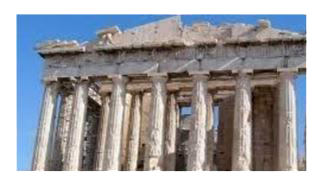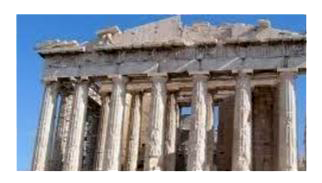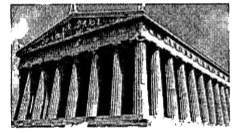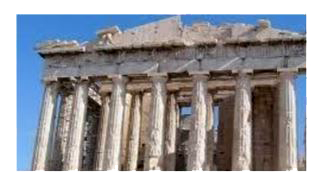Marble’s popularity began in ancient Rome and Greece, where white and off-white marble were used to construct a variety of structures, from hand-held sculptures to massive pillars and buildings.

A student added 10g of calcium carbonate in a rigid container, secured it tightly and started to heat it. After some time, an increase in pressure was observed, the pressure reading was then noted at intervals of 5 mins and plotted against time, in a graph as shown below. During which time interval did maximum decomposition took place?

15-20 min
10-15 min
5-10 min
0-5 min
The correct Answer is:D
The maximum decomposition is when the pressure is maximum. As we can see in graph that from 0 to 5 minutes, the pressure increases from 0 to 0.625 atm.
Topper's Solved these Questions
- CHEMICAL REACTIONS AND EQUATIONSBOOK - OSWAL PUBLICATIONCHAPTER - CHEMICAL REACTIONS AND EQUATIONSEXERCISE - ASSERTION AND REASON BASED MCQs
8 Videos
- CHEMICAL REACTIONSBOOK - OSWAL PUBLICATIONCHAPTER - CHEMICAL REACTIONSEXERCISE - BOARD CORNER (Short Answer Type Questions)
3 Videos
- DIKSHA QUESTIONS BOOK - OSWAL PUBLICATIONCHAPTER - DIKSHA QUESTIONS EXERCISE - PERIODIC CLASSIFICATION OF ELEMENTS (MULTIPLE CHOICE QUESTIONS)
13 Videos
Similar Questions
Marble’s popularity began in ancient Rome and Greece, where white and off-white marble were used to construct a variety of structures, from hand-held sculptures to massive pillars and buildings.

The substance not likely to contain CaCO3 is
View SolutionMarble’s popularity began in ancient Rome and Greece, where white and off-white marble were used to construct a variety of structures, from hand-held sculptures to massive pillars and buildings.

Marble statues are corroded or stained rain water. Identify the main reason

View Solution
Knowledge Check
Read the following and answer the question.
Marble's popularity began in ancient Rome and Greece, where white and off-white marble were used to construct a variety of structures, from hand held sculptures to massive pillars and buildings.

Gas A, obtained above is a reactant for a very important biochemical process which occurs in the presence of sunlight. Identify the name of the process -ARespirationBPhotosynthesisCTranspirationDPhotolysisIf 200 mL of N/10 HCl were added to 1 g calcium carbonate, what would remain after the reaction ?
ACaCO3BHClCNeither of the twoDParth of both
Marble’s popularity began in ancient Rome and Greece, where white and off-white marble were used to construct a variety of structures, from hand-held sculptures to massive pillars and buildings.

Calcium oxide can be reduced to calcium, by heating with sodium metal. Which compound would act as an oxidizing agent in the above process
View SolutionMarble’s popularity began in ancient Rome and Greece, where white and off-white marble were used to construct a variety of structures, from hand-held sculptures to massive pillars and buildings.

Gas A, obtained above is a reactant for a very important biochemical process which occurs in the presence of sunlight. Identify the name of the process
View SolutionA gas is keptin a rigid cubical container. If a load of 10kg us put on the top of the container, does the pressure increase?
View SolutionFour out of 10 marbles are red. What fraction of marbles are not red?
View SolutionWrite a short note on marble.
View SolutionAn urn A contains 3 white and 5 red marbles. Another urn B contains 5 white and 3 red marbles. Two marbles are transferred from A to B and then one is drawn from B. What is the probability that it is red?
View Solution
